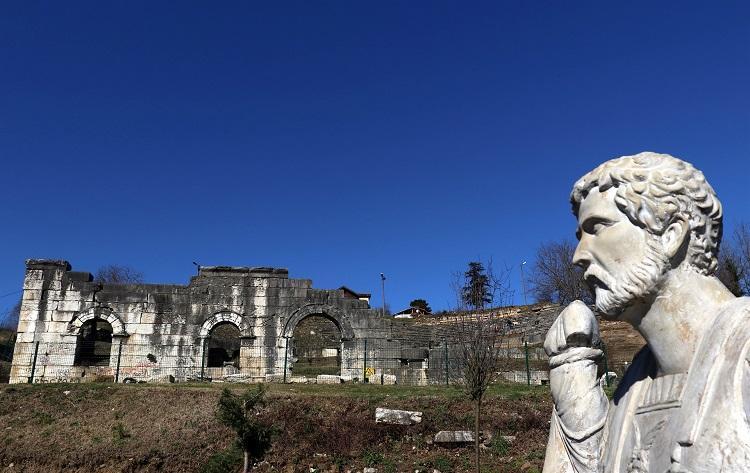Magnificent structure in western Black Sea region unearthed
DÜZCE

In the ancient city of Prusias ad Hypium in Düzce, which is believed to be the oldest settlement of the western Black Sea region, excavation work has been extended to 12 months and archaeologists are excited to unearth many artifacts every other day in the region.
Excavations have been ongoing in the ancient city’s theater, publicly known as “40 steps,” in Konuralp district.
Archaeologists, who are taking part in the excavations in the ancient theater, on which new buildings were built over time but the underground richness has not deteriorated, make an intense effort to date the finds unearthed.
The scientific consultant to the excavations, Düzce University Archaeology Department academic associate professor Emre Okan said that the area of the ancient theater is a small part of the very big city.
Speaking to the state-run Anadolu Agency, Okan said that the city spread over a wide area, and that the region joined the kingdom in the time of King Prithias of Bithynia in the Hellenistic period, and had its brightest time in the 2nd century B.C. during the Roman Empire.
Stating that the theater is the only magnificent building left from the ancient city, Okan said, “This is actually the only building that shows us the full splendor of the ancient city. The importance of the city comes from here. All kinds of excavations and works carried out here are important in terms of showing us the functions of both the theater and the stage after the use of the theater.”
He said that the theater was used until the end of the 4th century.
“Based on the findings we have obtained after the 4th century, we think of this place as a workshop area, a business area, an industrial site. We have some findings that it was used that way. Excavations will not only be in the theater. There will be studies in which post-theater finds belonging to late antiquity are also evaluated. There will be the stage of publication. The 12-month excavation will make a significant contribution to both the fieldwork and the publication works.”
Stating that the region is a city involved in Black Sea trade through its rivers, Okan said, “We are digging a huge architecture. Even the smallest finds that will emerge from the architecture are enough for an archaeologist to be excited and happy. We see the architecture, but these finds give us details about the architecture. The smallest coin to be unearthed makes us to date a layer. A piece of ceramic or a small wall gives us the information in the residential area here. It helps us understand the function of this place. That’s why every find is very precious for us. Therefore, we, as archaeologists, do not distinguish between large or small finds, we cannot. Everything is valuable to us.”
Okan added that it is one of the rare theaters that remained intact throughout Anatolia with the structure of the theater.
















